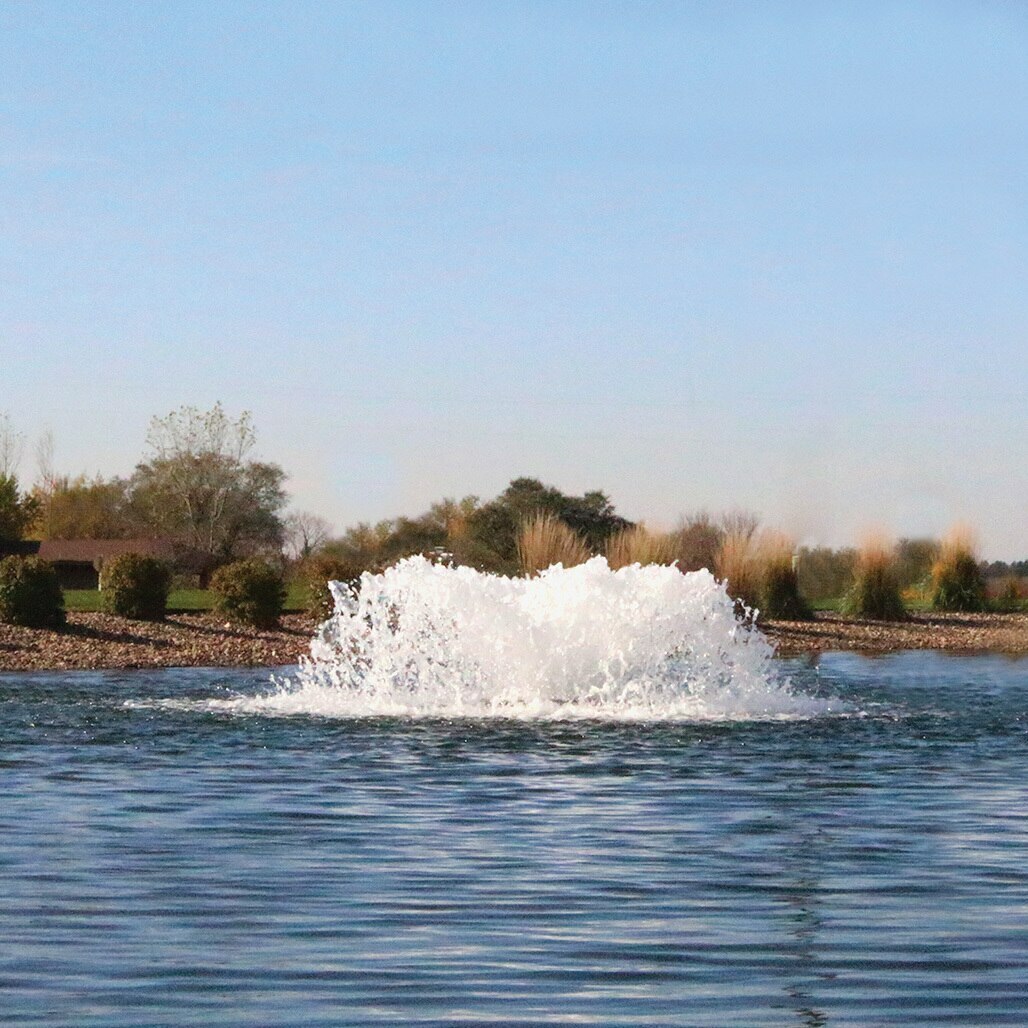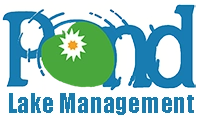What is an Algae Bloom?
Algae are photosynthetic microorganisms that are found in most habitats. Algae vary from small, single-celled forms to complex multi-cellular forms.
An Algae Bloom is an overwhelming fast increase in the number of algae in a waterway. Algae Blooms can occur in ponds, lakes, and saltwater environments.
Determine which Algae is in your pond. View our Algae Identification page.

Algae Bloom Causes?
Algae Bloom Causes can be the result of runoff of phosphorus and nitrogen-based nutrients. Extremely high concentrations of these nutrients can be the fuel for increases in algae blooms and other aquatic vegetation.
Decaying weeds, leaves, trees, and other vegetation in the waterway feed bacteria that increases decomposition. The increase of bacteria uses up the oxygen in the water making it difficult for fish and insects and other aquatic life to survive.
Prime growing conditions for Algae Blooms are calm, slow-moving, or static water when the weather is warm. The proliferation of algae can turn the water noticeably green, although red, brown, and yellowish colors can occur. Some species of algae grow in clumps covered in a gelatinous coating and have the capability to float, allowing cells to stick together into large surface scums in calm weather.

Are Algae Blooms Harmful to Wildlife, Pets and Humans?
Algae are a normal component of the aquatic food chain and are usually not harmful to people. Toxic Algae Bloom – if the strains of algae that produce toxins reach high concentrations, then fish, insects, aquatic wildlife, livestock, pets, and perhaps even people who are exposed to biotoxins, produced by phytoplankters can become sick.
One harmful toxin is domoic acid, which can disrupt normal nerve signaling in the brain, causing disorientation and seizures. It can cause death to fish, seabirds, marine mammals and even people.
Although the tiny organisms are regularly there, concentrations of them can create enough toxins to seriously sicken people – primarily children – and be deadly to pets.
In lower concentrations skin may be irritated, you may notice a rash developing. If you’ve ingested it, typically you’d get a dry mouth, possibly nausea or vomiting, a headache, or diarrhea. If a person is exposed to an algae bloom it is advisable to consult with a healthcare provider.
Where are Algae Blooms found?
Masses of algae (Algae Blooms) often occur in stormwater ponds during warmer seasons. Stormwater facilities are designed to capture polluted runoff. The ponds help remove nutrients and sediments before these pollutants can reach fragile waterways.
Need help with stormwater pond management? Call Pond Lake Management
In addition to stormwater ponds, Algae Bloom can grow in Lakes, Farm Ponds, and Coastal Waterways. Generally, any body of still water, near sources of nutrient and sediment-rich run-offs are potential homes for Algae Blooms.

How long do Algae Blooms last?
How long do algal blooms last? Harmful algal blooms will remain as long as there are favorable conditions, including warmth, sunlight, and low flow rates. Blooms can last from weeks to months and it is difficult to predict when they will clear.
How to manage Algae Blooms?
Low levels of Algae naturally occur in most bodies of water. Keeping Algae levels to acceptable levels require consistent and appropriate management techniques.
Below are a few suggested preventive measures:
- Remove decaying tree limbs, refrain from dumping landscape waste and other material in ponds and lakes.
- Take preventive measures such as trim trees, bushes, and other near by vegetation to prevent material from entering the waterway.
- Clear obstructions that prevent natural water flow in and out of the Pond or Lake.
- Avoid using fertilizer and other phosphate and nitrogen-rich nutrients near ponds lakes and coastal areas that might be recipients of runoff.
- Add Aeration to your pond or lake to help oxygen back to the water and combat Algae reproduction.
- Use Algaecides to help reduce Algae. Shop for Algaecides.
- Work with a professional to manage your Pond or Lake health.
With a Pond Maintenance plan, your waterway is consistently monitored and treated, learn more: Pond Lake Management Maintenance Plans.


More Resources on Algae Blooms
- CDC: Avoid Harmful Algae
- USA Today: Toxic Algae Blooms
- NRDC: Freshwater Harmful Algal Blooms 101
- NOAA: Harmful Algal Blooms
- EPA: Harmful Algal Blooms
- Science Daily: Algal Bloom

